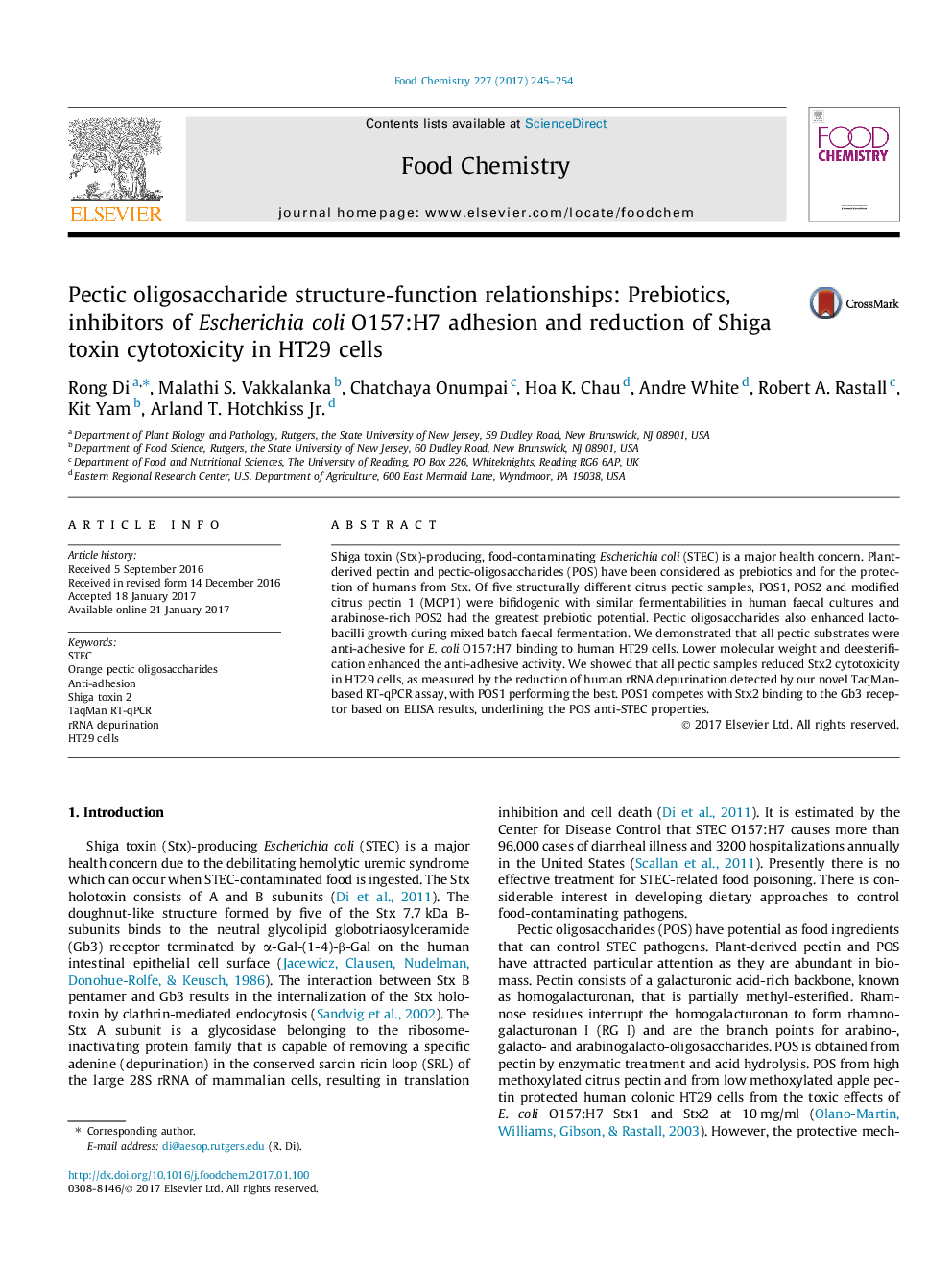| Article ID | Journal | Published Year | Pages | File Type |
|---|---|---|---|---|
| 5133293 | Food Chemistry | 2017 | 10 Pages |
â¢Determined bifidogenic citrus pectic oligosaccharide (POS) structural diversity.â¢Five citrus POS were anti-adhesive for Stx-producing E. coli O157:H7.â¢Developed a novel TaqMan-based RT-qPCR assay to measure rRNA depurination by Stx2.â¢Citrus POS samples reduced the cytotoxicity of Stx2 holotoxin in HT29 cells.
Shiga toxin (Stx)-producing, food-contaminating Escherichia coli (STEC) is a major health concern. Plant-derived pectin and pectic-oligosaccharides (POS) have been considered as prebiotics and for the protection of humans from Stx. Of five structurally different citrus pectic samples, POS1, POS2 and modified citrus pectin 1 (MCP1) were bifidogenic with similar fermentabilities in human faecal cultures and arabinose-rich POS2 had the greatest prebiotic potential. Pectic oligosaccharides also enhanced lactobacilli growth during mixed batch faecal fermentation. We demonstrated that all pectic substrates were anti-adhesive for E. coli O157:H7 binding to human HT29 cells. Lower molecular weight and deesterification enhanced the anti-adhesive activity. We showed that all pectic samples reduced Stx2 cytotoxicity in HT29 cells, as measured by the reduction of human rRNA depurination detected by our novel TaqMan-based RT-qPCR assay, with POS1 performing the best. POS1 competes with Stx2 binding to the Gb3 receptor based on ELISA results, underlining the POS anti-STEC properties.
